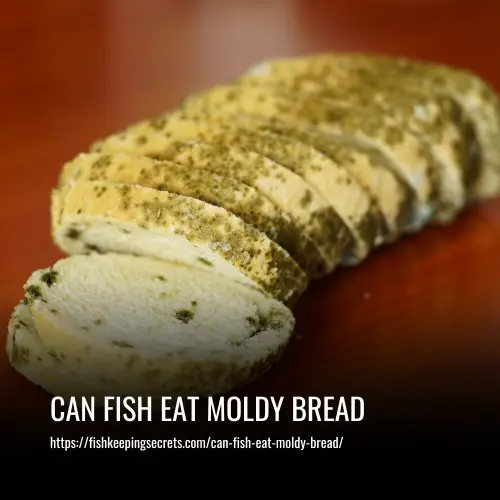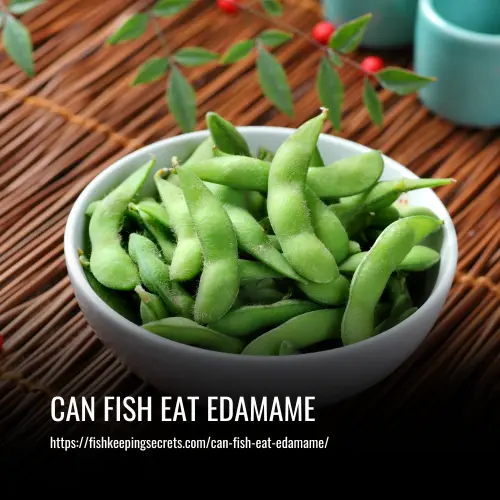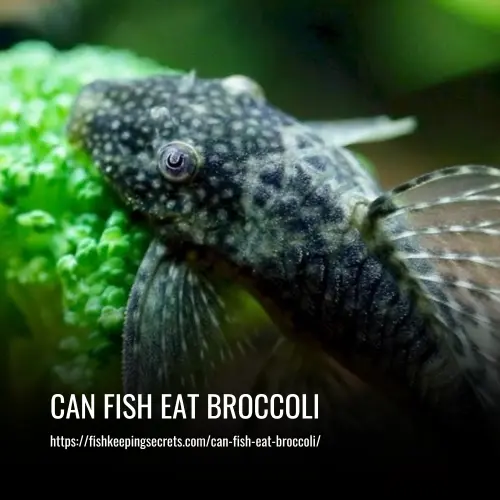No, fish should not eat moldy bread. Mold can pose a health risk to fish and feeding them stale or moldy bread can lead to illness or infection. It’s best to avoid feeding fish bread altogether, even fresh bread, as it is not a natural part of their diet and does not provide the necessary nutrients for their health.

Does Moldy Bread Pose a Health Risk to Fish
Moldy bread can pose a health risk to fish. Mold is a type of fungi that can produce toxins, and if fish consume moldy bread, they may be exposed to these toxins. This can lead to digestive issues and other health problems for the fish. It is best to avoid feeding fish moldy bread and provide them with a balanced diet that meets their nutritional needs.
Can Fish Digest the Mold from Bread
No, fish cannot digest mold from bread. Fish have specific dietary needs and should be fed a balanced and appropriate diet to maintain their health. Moldy bread can contain harmful bacteria or toxins that could be detrimental to the fish’s digestive system. It is best to provide them with commercially-prepared fish food or specific foods recommended for their species.
Can Eating Moldy Bread Lead to Illness in Fish
There is a possibility that eating moldy bread can lead to illness in fish. Mold can produce harmful toxins that can be ingested by fish and cause health problems. It is always best to avoid feeding moldy bread to fish and choose healthier and safer options for their diet.
What are the Nutritional Benefits of Feeding Fish Moldy Bread
Feeding fish moldy bread does not provide any nutritional benefits. In fact, moldy bread can be harmful to fish as it may contain toxins produced by the mold. It is best to feed fish a balanced diet of appropriate fish food to ensure they receive the necessary nutrients for their health and well-being.
Are There Any Dangers in Feeding Fish Moldy Bread
Feeding fish moldy bread can be dangerous because molds produce toxins called mycotoxins. These mycotoxins can be harmful to fish and can negatively affect their health and well-being. It is best to avoid feeding fish moldy bread and instead provide them with proper fish food that is safe and nutritionally balanced for them.
Are Some Types of Bread More Suited for Feeding a Fish than Others
Feeding bread to fish is generally not recommended, as it can cause digestive issues and pollute the water. If you do choose to feed bread to fish, it is best to use whole grain bread or bread with minimal additives. However, it is still important to feed fish a diet that is appropriate for their species and provides necessary nutrients.
What Should You Do if Your Fish Eat Moldy Bread
If your fish have accidentally eaten moldy bread, it is important to monitor them for any signs of illness. Moldy bread can contain toxins that can be harmful to fish. If you notice any abnormal behavior, changes in appetite, or signs of illness, it is best to consult a veterinarian who specializes in fish health for guidance on how to proceed. In general, it is always best to feed fish a proper diet of appropriate fish food to ensure their health and well-being.
FAQs
Safe and recommended foods for feeding fish include high-quality fish pellets, flakes, live or frozen worms, brine shrimp, and vegetables such as peas or lettuce. Offering a varied and balanced diet will help keep the fish healthy and thriving.
Signs that fish may be affected by moldy bread include loss of appetite, unusual swimming behavior, and changes in their physical appearance. If you notice any of these signs, it’s important to stop feeding them the moldy bread and seek proper care for the fish.
Mold on bread is usually visible as fuzzy spots with various colors such as white, green, or black. The bread may also have a musty odor, indicating the presence of mold. If bread shows any signs of mold, it should not be fed to fish.
When feeding fish, it is crucial to ensure that the food is fresh, free from mold, and appropriate for the species. Overfeeding should also be avoided to maintain the health of the fish and the cleanliness of the tank.
Moldy bread is generally safe for most types of fish, including freshwater and saltwater fish. However, it is always best to research the specific dietary needs of your fish species before offering moldy bread.
Feeding fish moldy bread too frequently can lead to digestive issues and potentially weaken their immune system. Mold can also contain harmful toxins that may negatively impact the health of the fish.
Yes, plenty of commercial fish foods are available that are formulated to meet the nutritional needs of fish. It is recommended to opt for these options over moldy bread.
Fish should only be given small amounts of moldy food that is safe for human consumption, such as vegetables, fruits, or certain types of bread. It is important to always ensure that the moldy food does not contain any harmful toxins before offering it to the fish.
Conclusion
In conclusion, it is not recommended to feed fish moldy bread. Mold can contain harmful toxins and bacteria that can be detrimental to the health of fish. It is important to provide a properly balanced and nutritious diet to maintain the well-being of fish in aquariums and ponds.
Instead of using moldy bread, fish owners should opt for high-quality commercial fish food or fresh vegetables as a safe and healthy alternative. Additionally, regular monitoring of fish behavior and water quality is essential to ensure a thriving aquatic environment.



